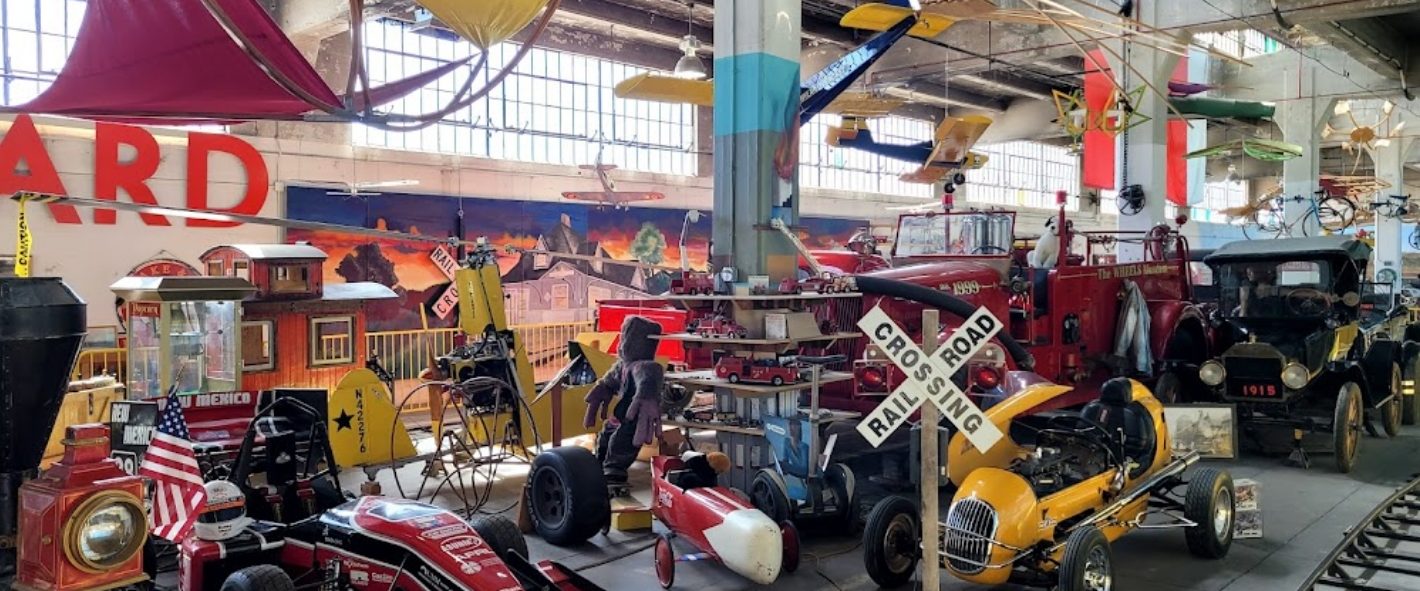The single most important factor in the development of Albuquerque between 1880 and 1930, in its transformation from a farming village into a commercial and industrial center, and in its emergence as the leading city of New Mexico was the railroad. Throughout this period, the Santa Fe Railway was the city’s leading employer. In addition, its buildings were viewed with community pride as signs of progress and prosperity. Because of the railroad’s leading role, these structures are prominent reminders of this important period in Albuquerque’s history.
The Historic Railroad Buildings of Albuquerque
The City has announced the adoption of a Master Plan to guide the redevelopment of the City-owned Rail Yards site in Barelas. The Rail Yards planning process will help guide redevelopment of this historic site.
Help identify the men who worked in the Shops
“We have a photo of many of the men who worked in the shops. They’re on a locomotive, and we would love to identify the men,” said Leba Freed, the president of the WHEELS Transportation Museum in Albuquerque. “Sadly, they’re gone now, but we are hoping many of the family members would be able to identify them.”
Greasy, covered in their hard work, the men were machinists and boilermakers who kept the railroad running from 1920 through the 1960s.
“They restored as many as 40 locomotives, and each one weighed as much as a million pounds,” Freed said.
Freed said the men’s work brought bigger things to Albuquerque.
“The railroad came and it built Albuquerque,” Freed said. “Had the railroad not come, we really think that Albuquerque would never have become a city.”
Leon Padilla of Bernalillo said his grandfather and uncles are in the photograph.
“I remember seeing the locomotives in the shop over there when I came to visit my grandfather,” Padilla said.
Dennis Baca, a retired railroad worker from Los Lunas, said he wants to know who the men are so their stories can be recorded.
“Once that history is dead, we will never see it,” Baca said.
Baca said the group has had some success identifying people in the photo.
“At the rail market one day, I saw a man who picked up the photo and he had tears in his eyes and he says, ‘I know this guy,’ and I said, ‘Who is that?’ He said, ‘That’s me,’” Baca said.
“Some people may have the old railroad records. They may have a lantern. They may have a photo of their grandpa,” Freed said.
Items that might be buried in a box could be pieces of history that belonged to the railroad or evidence of someone who played an instrumental role in keeping the trains running, Freed said.

